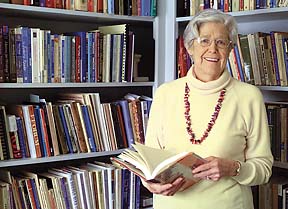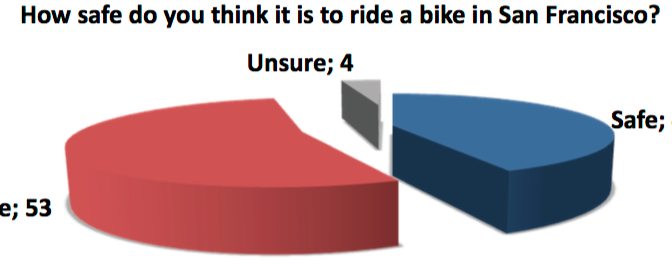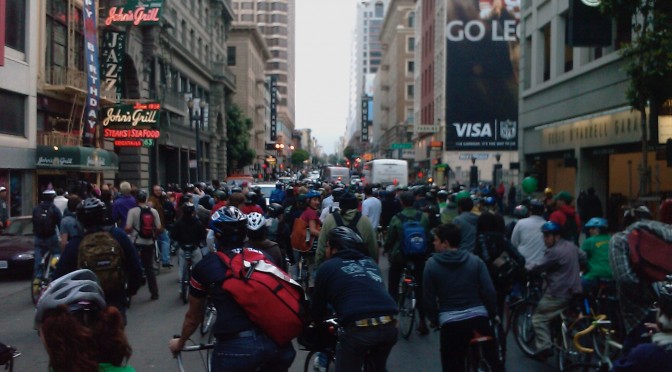As we continue to think about audiences and other human groups, read Matt Rendell’s account of the strategy and physics of bike racing — like many sports, cycling involves both teams and individuals, but because a race might have 20 teams, the group dynamics can be complex and fascinating.
Tag Archives: reading
For class Tuesday 1/31/2017

Hi everyone,
There are four asks for class on Tuesday. I expect that these tasks will take less than 1.5 hours to complete.
1. Please post to your blog your thoughts about Strickland’s article “What Every Kid Wants” — you can use what you wrote in class (10 minutes).
2. Read Tseng & Fogg’s essay on “Credibility and Computing Technology.” This article lays out some key concepts we will use throughout the semester. (25 minutes)
3. Refer to this page of resources: Module 1 Readings & Resources. Rather than choosing one text (as I said in class), please spend about 45 minutes (or more, if you like) with different texts (short articles, scholarly articles, videos). In other words, you can choose 1 or several, but plan to spend about 45 minutes total (or more) in reading & viewing. (45 minutes)
4. Post to your blog about what your read. The post can be informal — you can approach it the way you approach in-class writing (set a timer for 10 minutes and write like crazy). Of course, some people like to write really long blog posts. But that’s a real art form (or mania).
Becoming a Public Speaker
The first chapter of A Pocket Guide to Public Speaking offers some great observations about the work we’ll do in this course.
First, the authors emphasize that public speaking is a valuable skill that applies to your other courses and to your whole life.
Second, they point out that communication is essential for citizenship: in a democracy, effective communicators have the opportunity to shape law and policy.
Finally, they give some tips for how to draw on your prior knowledge and experience to succeed in this course.
Access the text via Canvas:
Strickland’s “What Every Kid Wants”
Bill Strickland’s essay, “What Every Kid Wants,” is a nostalgia-soaked meditation on the role of bicycles in American childhood.
Read Strickland’s essay (available via Canvas) for Thursday, January 25th.
You can read more of Strickland’s work at Bicycling magazine.
To Do for Class Day 12 (Thurs 9/29/16)
You have three main tasks to complete for Thursday: read, write, prepare.
Warning: these will take longer than just a few minutes, so plan ahead & don’t do everything at the last minute.
Read
Read a selection on “Using Field Research” from Envision: Writing and Researching Arguments (Alfano and O’Brien, 2014).
Write
Post to your blog a Write-Out for your 2-minute talk (see below).
Prepare
Prepare: 2-minute topic proposal for S2, using the two points below as a guide:
- “I’d like to find out more about…”
describe area or topic of interest - “My plan for gathering information is…”
describe research methods
Use 1 or 2 slides, as appropriate.
To Do for Class Day 11 (Tuesday 9/27/16)
You have three main tasks to complete before Tuesday: explore, read, write.
Warning: these will take longer than just a few minutes, so plan ahead & don’t do everything at the last minute.
Explore
Your task is a “space observation.” Walk, bike, or otherwise transport yourself to an outdoor location off-campus and carefully observe the space.
Here are some questions to get you started. You don’t need to answer each of these — they are suggestions to get you thinking:
- What takes up space (objects, sound, contour)? Both moving and stationary objects take up space; also, sound can take up space.
- How is space shaped?
- How are subspaces marked? Example: in the Panhandle, the shared path is paved, which marks it off from the grassy part. Also, the path itself is divided into two lanes by a painted stripe.
- How do people (and other creatures) use space(s)?
- What speeds happen in space?
- What are you not seeing? What’s missing?
Places you could go (again, just suggestions… I invite you to explore on your own):
- John F. Kennedy Drive in Golden Gate Park — a big section of JFK is closed to auto traffic on Sundays, could be an interesting thing to see (and participate in)
- Geary St. is one of San Francisco’s busiest corridors — early plans for the BART system imagined a line under Geary St, that would tunnel under the Golden Gate and connect to Marin
- Fell St. or Oak St. east of Baker — between Baker and Scott on Fell and Oak are some of SFs flagship separated bike lanes
- the world-famous San Francisco “Wiggle” (Wikipedia page) (on Yelp)– the seven or eight blocks of the Wiggle are a great place to observe pedestrians, cyclists, and motorists obeying and not obeying traffic laws
- Turk Street — on a clear day, you can stand in the middle of Turk St. at its crest and see the Farallon Islands to the west, 27 miles offshore, and Mt. Diablo, more than 30 miles to the east. But don’t stand there too long, because Turk St. traffic moves pretty quickly.

Read
Chris Carlsson, “I’m in a Hurry, so Slow Down!” (blog post/essay)
John Zimmer, “The Third Transportation Revolution” (blog post/essay)
Write
Write a blog post discussing the arguments of Zimmer & Carlsson. Zimmer, as I mentioned in class, is a co-founder of Lyft. Carlsson is a San Francisco writer, activist, and co-founder of Critical Mass.
Your post should show that you are thinking about what ideas and positions these two authors share, and also where they differ. You can also evaluate their points.
Your post should also include information about your spatial observation expedition.
If it makes sense to connect your observation to bicycles, please do.
Include a relevant image (photo, graph, chart…).
Due before class Tuesday September 27th.
David Binder Research, Summary Memo on Transportation
This report was prepared by David Binder Research. It’s a great example of how our discussion of credibility can be extended to talk about evidence — how to get it, how to use it, and how to evaluate it.
As you examine this report, think about evidence. How was it gathered, and how is it presented?
https://www.sfbike.org/wp-content/uploads/2014/12/DBR-SF-Voter-Transportation-Research-Summary1.pdf
For class Thursday, September 1, 2016
Thanks everyone for a great trip to the San Francisco Bicycle Coalition. It was great to meet Executive Director Brian Wiedenmeier and Membership Assistant Kelsey Roeder (you can read their bios on the sfbike.org.
For Thursday, here are your 4 tasks:
- Your first talk in front of the class is coming up next week. It’s time to think about some of the things we said we value in public speakers: confidence, eye contact, body language, volume & variety of voice — all the things that count as delivery. To continue our conversation about this, watch this video of author and speaker Malcolm Gladwell (I also invite you to look at some of his pubic lectures or TED talks and read some of his published writing). So, Task 1: watch.
- B.J. Fogg is an instructor at Stanford and a persuasion guru. As a graduate student, he researched the idea of credibility in computing design. Read this short research article co-written by Tseng and Fogg, “Credibility and Computing Technology” (library login required). Alert! This is an article written for an audience of specialists, so parts of it may be hard to follow. Our focus will be on the concept of credibility (not on their methodology or on computing technology). Come to class ready to talk about their ideas about credibility. Task 2: read.
- Spend 15-30 minutes on the website of the San Francisco Bicycle Coalition. Look around in the tabs at the top of the page: News, Events, Resources, Our Work, About… As you poke around, think about Horner’s ideas of credibility as well as Tseng and Fogg’s ideas. Task 3: surf.
- Write a comment (use the comment function, below), making a connection between at least 2 of the 3 tasks (above). For example, how does Gladwell’s position relate to Tseng and Fogg? Or, how do Tseng and Fogg’s ideas apply to the SFBC site? Your comment can be informal, can include questions, criticisms, examples, etc., and should be about 50 words or so. Task 4: write.
Horner, Establishing Credibility

Winifred Bryan Horner of Columbia, a former English Professor at MU.
Winifred Horner’s short chapter on credibility is based on ancient theories of rhetoric.
According to Aristotle, a speaker’s credibility depends on three characteristics:
- intelligence and common sense
- virtue and good character
- goodwill
Horner discusses these three forms of credibility (or ethos) using the example of Martin Luther King, Jr.
For Tuesday, August 29, read Horner’s short chapter (it originally appeared in a textbook for undergraduate students). The PDF is available here.
Carlsson, Critical Mass
Chris Carlsson, a San Francisco activist and writer, was there at the beginning of Critical Mass (or the “Commute Clot,” as it was originally known).
Since the first Critical Mass more than twenty years ago, the event has spread around the world. Here in San Francisco, as elsewhere, it has sometimes caused controversy.
In short, the event has variable credibility: some people strongly approve of it, while others are sharply critical of it (or of some elements of it).
Your assignment is to read some selections in a book edited by Carlsson (many other people contributed to the book, as you’ll see). Read Carlsson’s Introduction and a few of the selections that follow. This will give you a sense of the participants’ view of the event. The PDF is linked here.
The entire book is available at the USF library in print form and at nearby bookstores such as Green Apple Books.
If you’re thinking of going to Critical Mass, you might also want to watch the rest of USF student Ellie Vanderlip’s film The Human Motor.
The ride begins at Justin Herman Plaza on the last Friday of every month. People begin assembling around 5 or 5:30 pm, and they actually begin riding around 6 pm usually. There is no leader and no one is in charge.


